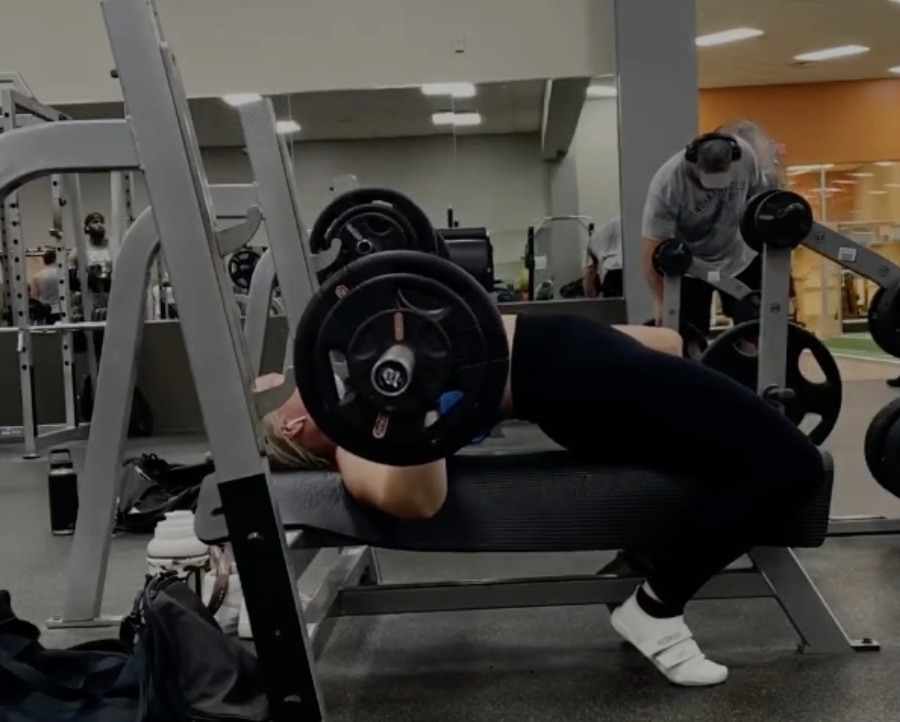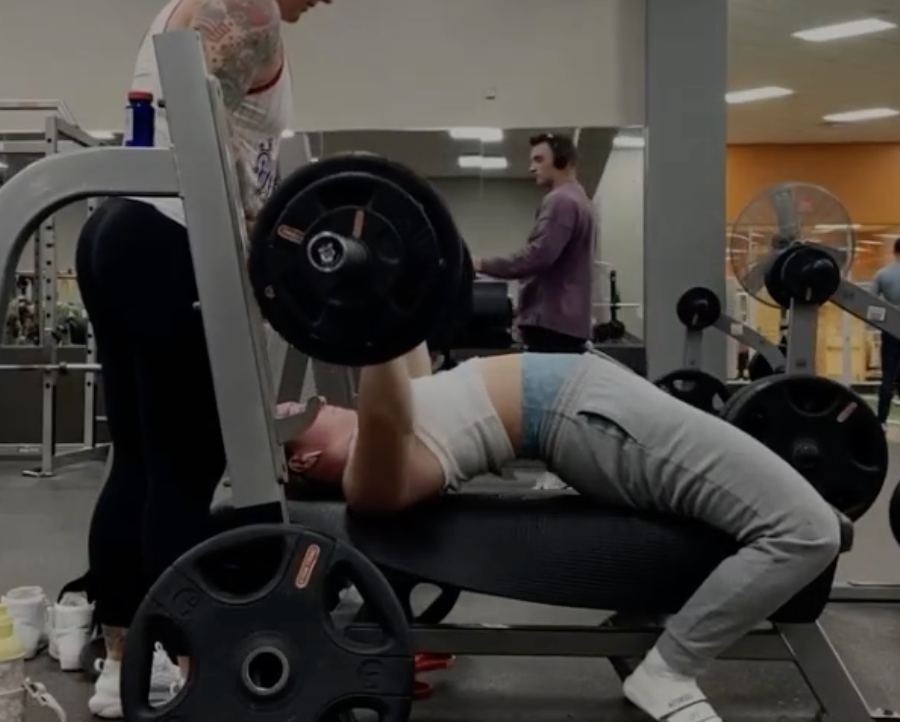The Benefits of the Close-Grip Bench Press
Written by The Boostcamp Editors
Skyrocket the strength and size of your triceps
The world of strength training is complex and there is a lot that goes into building up each muscle. The triceps are one muscle group that bring a lot of benefit to your overall physique in terms of size and strength, whether you are a powerlifter or bodybuilder or Olympic weightlifter. The triceps are responsible for a good portion of the size of your arm, and they contribute to movements like the bench press and overhead press. That being said, if you're looking to take your upper body workout to the next level, then the close-grip bench press is an exercise you need to try.
The close-grip bench press is a variation of the traditional bench press that targets the triceps muscles and offers a range of benefits for both strength and muscle growth. Let's explore the close-grip bench press in detail, including proper form, common mistakes, variations, alternative exercises, muscles worked, and the undeniable benefits of incorporating this exercise into your workout routine.
Understanding the Close-Grip Bench Press Technique

The close-grip bench press, as the name suggests, involves gripping the barbell with your hands closer together compared to the traditional bench press grip. This hand position targets the triceps muscles more directly, increasing their activation during the exercise, and it allows you to really overload them. It's important to maintain proper form throughout the exercise, including a stable shoulder position, straight line bar path, and full range of motion. By understanding the proper technique for the close-grip bench press, you can maximize muscle engagement and minimize the risk of injury.
Setting Up for the Exercise
Before performing the close-grip bench press, it's crucial to set up for the exercise properly. Start by positioning yourself on a flat bench with your feet flat on the floor for stability. Ensure your shoulder blades are retracted and squeezed together to create a solid base of support. Place your hands on the barbell at a shoulder width distance, slightly narrower than the grip used for standard bench press. This narrower grip will bring the emphasis to your triceps muscles. Make sure your grip is firm, but not overly tight. Maintaining a stable starting position is essential for proper execution of the close-grip bench press.
Unracking and Positioning the Barbell
Once you're in the proper starting position, it's time to unrack the barbell. With straight arms and your chest up, lift the barbell off the rack using your triceps muscles. Position the barbell directly over your upper chest, keeping your elbows tucked close to your body. The movement pattern for the close-grip bench press involves stability at the shoulder joint, so make sure to maintain proper form and engage your shoulder blades throughout the exercise. This will provide a solid foundation for the movement and allow for optimal muscle activation.
Lowering and Lifting the Barbell
As you lower the barbell towards your lower chest, focus on maintaining a full range of motion. Lower the barbell under control, allowing it to touch the lower chest before driving it back up. This complete range of motion is important for effective muscle growth and strength development. Throughout the movement pattern, keep the barbell in a straight line, ensuring the proper bar path. By following these guidelines, you will engage the triceps muscles to press the barbell back up, maximizing the benefits of the close-grip bench press.
Common Mistakes in Performing Close-Grip Bench Press
While the close-grip bench press offers a range of benefits, it's important to be aware of common mistakes that can hinder your progress. By avoiding these errors, you can ensure proper form, muscle engagement, and overall effectiveness of the exercise.
Misplacement of Hands
One common mistake in performing the close-grip bench press is the misplacement of the hands. Placing the hands too close or too far apart can affect the muscle targeting and compromise the exercise's benefits. The grip width should be adjusted based on individual needs and comfort, aiming for a narrower grip compared to the traditional bench press. This narrower grip emphasizes the triceps muscles and encourages proper muscle activation. To determine the best hand position for you, consult with a personal trainer who can provide guidance based on your specific goals and needs.
Incorrect Elbow Positioning
Another mistake to watch out for is incorrect elbow positioning during the close-grip bench press. Proper form includes keeping the elbows tucked close to the body throughout the movement. Avoid internal rotation of the shoulder, as this can lead to discomfort or strain. By maintaining the proper elbow position, you promote shoulder joint stability and reduce the risk of shoulder strain. Keeping the upper arms close to the body throughout the exercise ensures the triceps muscles are engaged effectively, leading to optimal muscle growth and strength development.
Inappropriate Weight Selection
Choosing the right weight for the close-grip bench press is essential for proper form, range of motion, and muscle engagement. Selecting an inappropriate weight can compromise the exercise benefits and increase the risk of strain or injury. It's important to find a weight that challenges you but still allows for proper form and full range of motion. Gradually increasing the weight as you build strength will help you progress safely and effectively. Remember, weight selection may vary for each individual, so listen to your body and adjust accordingly. If you're unsure, consult with a personal trainer or strength training expert for guidance based on your individual needs and goals.
Variations of Close-Grip Bench Press

Not only is the close-grip bench press an effective exercise, but it also offers several variations that can target specific muscle groups or cater to individual preferences. By incorporating these variations into your training routine, you can add variety, challenge different muscle groups, and spice up your workouts.
The Incline Close-Grip Bench Press
Looking to work out your upper chest effectively? Adjust the incline bench for an optimal upper chest workout. Engage both the triceps and upper chest muscles with the incline close-grip bench press. Maintain perfect form and a narrow grip to maximize muscle activation and minimize shoulder joint stress. The incline variation offers unique benefits for your triceps and shoulder muscles, making it a valuable addition to the pushing part of your weight training routine. Ensure to emphasize a closer grip and full range of motion for optimal results and muscle engagement.
Close-Grip Dumbbell Bench Press
Looking to target your triceps and chest muscles for increased strength? The close-grip dumbbell bench press is your go-to exercise. By engaging in this compound exercise, you can effectively improve upper body muscle growth and strength. Emphasizing a narrow grip, this exercise increases the range of motion for enhanced triceps engagement while also working multiple muscle groups simultaneously. Whether you're using an incline bench press, barbell bench press, or flat bench press, performing the close-grip dumbbell bench press with perfect form is essential for reaping its benefits in weight training.
Close-Grip Cable Press
When performing the close-grip cable press, it allows for a complete range of motion, effectively targeting the triceps and engaging the chest muscles for strength training. This exercise offers a narrow grip position, providing increased triceps engagement and preventing shoulder strain. By incorporating close-grip cable press variations, weight training enthusiasts can maintain perfect form and build strength in the triceps and chest areas. Whether on an incline bench press or a flat bench press, this exercise is effective for individuals looking to engage their triceps and chest muscles extensively.
Alternatives to the Close-Grip Bench Press
Sometimes you may be working with limited equipment or a packed gym, so you need to find an alternative. When looking for alternatives to the close grip bench, so let’s take a look.
The Close-Grip Push-Up
The narrow grip push-up is an effective bodyweight triceps-targeting exercise that enhances upper body strength and muscle size. This versatile movement not only improves bench press performance but also allows for targeted variations to focus on different triceps areas. Moreover, incorporating the narrow grip push-up into weight training routines can aid in enhancing shoulder stability, reducing the risk of injury. Consider starting with the incline or barbell bench press to perfect form before progressing to flat bench press, ensuring a comprehensive triceps workout while promoting overall upper body strength.
The Close-Grip Floor Press
When performing the close-grip floor press, you engage the triceps, chest, and shoulders, effectively targeting your upper body. This exercise is a fantastic way to enhance overall strength and muscular development. Moreover, it replicates real-life movements, contributing to improved functional fitness. By adopting a narrow grip, you reduce the strain on your shoulders, potentially easing any discomfort experienced during standard bench pressing. Integrating the close-grip floor press into your weight training regimen can ultimately enhance your performance in the regular bench press, making it an invaluable addition to your routine.
The Board Bench Press
The board bench press is a variation of the traditional bench press that involves placing a board on the chest before pressing the weight up. This technique helps in improving lockout strength and increasing triceps activation. By incorporating the board bench press into your training routine, you can target specific muscle groups and perfect your form for the regular bench press. The starting position for this exercise is similar to the flat bench press, with a narrow grip and shoulder-width apart. It is a valuable addition to weight training, especially for those looking to enhance their strength and overall performance.
Understanding the Muscles Worked by the Close-Grip Bench Press
When performing the close-grip bench press, the primary muscles worked include the triceps and pectorals. The exercise also engages the anterior deltoid and teres major. By using a narrow grip with hands placed at shoulder width, the emphasis shifts to these specific muscle groups. This variation of the traditional barbell bench press is an effective form of weight training that targets the mentioned muscle groups when performed with perfect form on a flat or incline bench press.
Triceps and Pectorals
The narrow grip bench press is an effective exercise for targeting the triceps, often overlooked in regular bench press workouts. By bringing your hands closer together on the barbell, you shift the emphasis from the chest to the triceps, thus building strength and definition in this muscle group. Additionally, it engages the pectoral muscles, helping to sculpt a more defined chest. Incorporating the narrow grip bench press into your weight training routine can improve overall upper body strength and endurance while maintaining perfect form to avoid injury.
Anterior Deltoid and Teres Major
The anterior deltoid and teres major muscles are crucially engaged during the close-grip bench press. When performing this exercise, these muscles are activated to stabilize the shoulder joint and support the movement. The shoulder width and narrow grip play a vital role in targeting and engaging the anterior deltoid and teres major effectively. It is essential to maintain perfect form and starting position throughout the movement to maximize the involvement of these muscles. Additionally, incorporating variations such as the incline bench press and barbell bench press can further enhance the engagement of these muscles during weight training, complementing the benefits of the regular bench press.
The Undeniable Benefits of the Close-Grip Bench Press
When performed with a narrow grip at shoulder width, the close-grip bench press offers undeniable benefits. This weight training exercise primarily targets the triceps and pectorals while also engaging the anterior deltoid and teres major muscles. Performing the close-grip bench press with perfect form reduces the strain on the shoulders compared to the regular bench press.
Physical Strength and Aesthetic Appeal
With a narrow grip and starting position, the close-grip bench press effectively targets the triceps, leading to increased arm strength and muscle definition. By also developing the lower chest muscles, this exercise contributes to a well-balanced upper body physique. Incorporating the close-grip bench press into weight training routines can aid in overall muscle growth and power. This compound movement not only enhances physical strength but also provides full upper body engagement, making it an essential exercise for individuals looking to improve their aesthetic appeal and muscular endurance.
Is Close-Grip Bench Press Easier on the Shoulders?
Close-grip bench press can reduce shoulder discomfort and minimize strain on the shoulder joint, allowing for increased range of motion. Proper form is crucial to lessen the risk of shoulder strain and promote good shoulder rotation. Incline press may be a suitable alternative for individuals with shoulder discomfort.
Where to Find Workout Programs
When it comes to finding a workout program that helps with progression and includes the close grip bench press, you would want to find a program that caters to your needs and guides you in the right direction, making sure that you are making the most gains. If you are looking to stay on track and continue with linear progression, then finding a good workout program is the key. Where do you look for a good bodybuilding workout program? Check out the Boostcamp App for some great programs.
Boostcamp is home to over 50 FREE workout programs that consist of strength, hypertrophy, or functional fitness, or both, from the push pull legs program all the way to upper lower. However, with Boostcamp, you don’t have to just follow a pre-written program, you also can create your own program as well, and track your progress to make sure you are on the right track. That being said, when you are looking to incorporate some arm training to further your powerlifting progress, then check out Boostcamp.
Boostcamp is a great place to find free workout programs, and it is designed to be the last workout app you ever need. You can choose from over 50 different programs designed for strength, hypertrophy, or both, and you can custom make your workouts as well.
Conclusion
In conclusion, the close-grip bench press is a versatile exercise that targets multiple muscle groups, and can really help with the strength and size in your triceps. By using proper technique and avoiding common mistakes, you can maximize the benefits of this exercise. Additionally, there are variations and alternatives to the close-grip bench press that can help you add variety to your workout routine.
Whether your goal is to build physical strength or improve aesthetics, incorporating the close-grip bench press into your fitness regimen can yield impressive results. Remember to listen to your body, start with an appropriate weight, and gradually increase intensity as you progress. So, give the close-grip bench press a try and enjoy the benefits it has to offer!
Boostcamp has plenty of free programs that help with both strength and hypertrophy, be sure to check them out and follow Boostcamp on Instagram and subscribe on YouTube!


